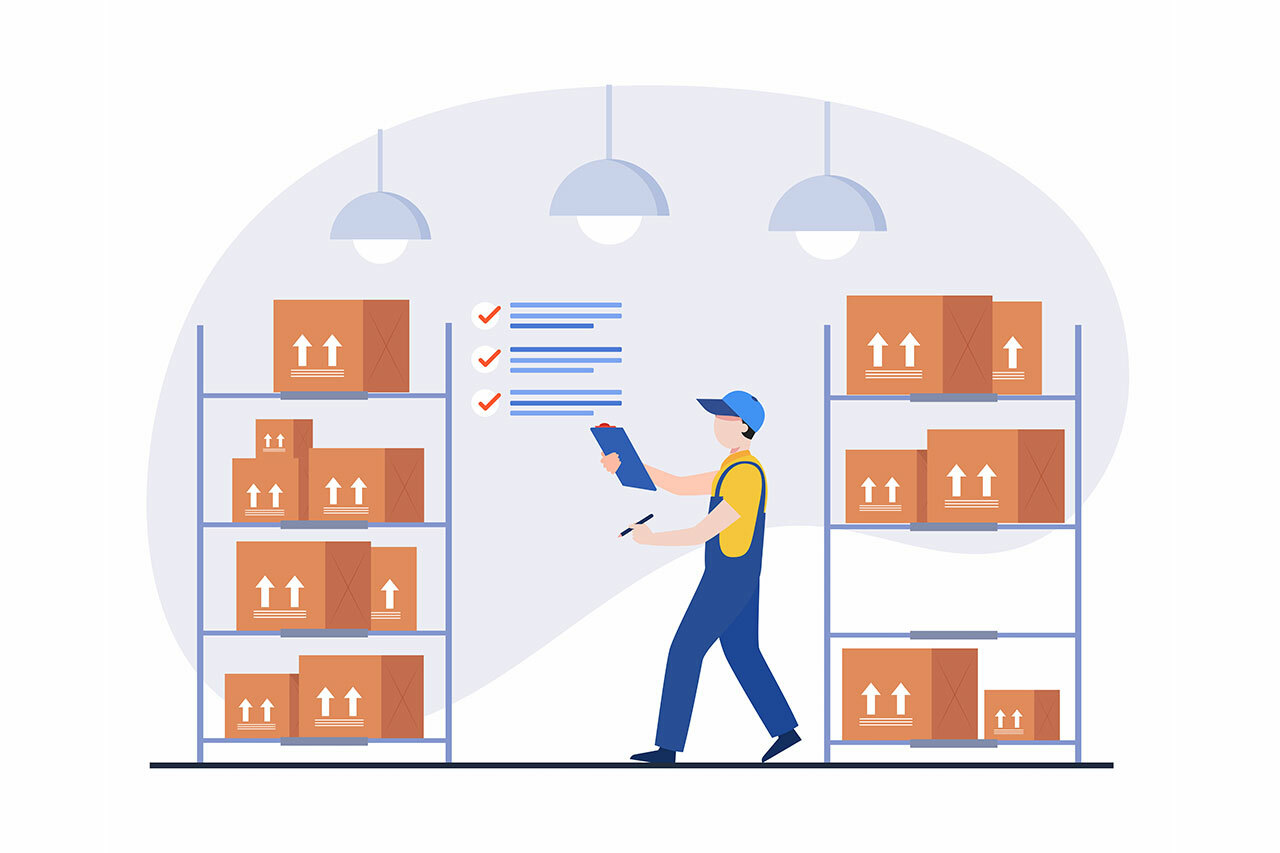Before delving into your business process management journey, one of the non-negotiable steps you must take is to learn its practical impact on other businesses that are related to yours. And what better way can you learn than availing yourself and your team with relevant use cases?
A business process management use case demonstrates the best practices of BPM methodologies, tools, and strategies to address various challenges during and after implementation to achieve specific organizational goals.
This blog discusses eight diverse use cases that highlight the impact of BPM across different sectors. From manufacturing to finance and retail, each scenario showcases how you can tailor BPM to suit unique industry demands while maintaining its core principles of optimizing processes and improving efficiency.
1. Use Case on Streamlining Property Sales in the Real Estate Industry

Challenge
The real estate industry involves lengthy property sales processes that often include numerous parties, such as buyers, sellers, agents, and legal representatives. Coordinating these stakeholders efficiently and ensuring a smooth transaction process can be challenging.
Some challenges that businesses in the real estate industry often face include managing contacts and listings, facilitating the sales funnel, handling marketing automation, and managing cross-location collaboration.
Solution
A process automation tool such as HubSpot can help real estate businesses resolve these challenges due to its balance of robust capabilities and ease of use.
- Unified sales and marketing: HubSpot provides a unified platform for sales and marketing activities, including lead generation, tracking and management, and streamlining the sales pipeline to increase closure rates.
- Tailored email outreaches: HubSpot’s Sequences can personalize email outreaches and nurture contacts over time. When prospects book a tour or respond to a mail, HubSpot will automatically unenroll them from the sequence.
- Seamless communication: HubSpot Playbooks can also help the sales team access critical information using call scripts, such as a call outline and battle cards, to enhance customer interactions.
2. Use Case on Optimizing Loan Approval in the Banking Sector

Challenge
One challenge financial institutions face is the need to streamline their loan approval process. Manual loan approval processes often lead to delays, inconsistencies, and a lack of visibility into the loan pipeline.
Solution
Pipefy has features that can provide financial services providers with a tailored solution to optimize their loan approval process.
- Intuitive interface: Pipefy has a visual interface to help map out the loan approval process in stages. This gives process owners a clear roadmap for application submission, document review, credit evaluation, and final decision.
- Workflow automation: With Pipefy, you can create customizable forms to collect information from loan applicants. You can set up automated notifications, task assignments, triggers, and due dates.
- Streamlined document management: Pipefy’s document upload feature facilitates the electronic submission of crucial documents, eliminating the need for physical paperwork and enhancing convenience.
- Enhanced collaboration: Loan officers, credit analysts, and managers can collaborate seamlessly within the Pipefy platform, promoting efficient communication and informed decision-making.
- Real-time tracking: You can get real-time insights into the loan pipeline and track each application’s progress.
You can also extend Pipefy’s application to other operational areas, such as customer onboarding and account management.
3. Use Case on Enhancing Inventory Management in a Retail Store

Challenge
Effective inventory management is crucial for retail businesses to avoid stockouts and overstocking, which can lead to lost revenue.
However, many retail stores rely on manual processes and spreadsheets and have disconnected systems, leading to stockouts, overstocking, and inaccuracies in product availability. The lack of real-time visibility into inventory levels can lead to lost sales opportunities and increased operational costs.
Solution
A BPM tool like Kissflow can enhance inventory management processes to improve customer satisfaction, optimize stocking levels, and streamline operations. Here’s how to use Kissflow to address these challenges:
- Centralized inventory control: Kissflow provides a centralized platform where you can store all inventory data, including product details, stock levels, and reorder points. This eliminates the need to juggle multiple spreadsheets and systems.
- Real-time tracking: With Kissflow’s real-time tracking feature, you can see stock levels, respond quickly to changing demand, and prevent stockouts.
- Automated reordering: You can set up automated reorder functionality to trigger purchase orders when stock levels fall below a predetermined threshold, ensuring that popular items are always available.
- Sales forecasting: These tools generate accurate sales forecasts using historical sales data and trends, enabling you to plan inventory levels more effectively.
- Supplier management: Kissflow facilitates communication with suppliers, ensuring timely deliveries and reducing lead times.
- Barcode scanning: Integrating barcode scanning applications with Kissflow can streamline inventory counting, minimizing human errors and saving time during stock takes.
4. Use Case on Efficient Customer Onboarding for a SaaS Company

Challenge
One common challenge SaaS companies face is efficiently onboarding new customers onto their platforms. A manual customer onboarding process can cause delays in getting customers up and running, decrease customer satisfaction, and hinder the company’s ability to scale effectively.
Solution
ProcessMaker is a robust business process management tool that can address these challenges and transform customer onboarding processes in the following ways:
- Automated workflows: You can create automated workflows that guide customers through the onboarding process step by step. These workflows include tasks, notifications, and reminders tailored to each customer’s needs.
- Personalized onboarding: With ProcessMaker, you can personalize the onboarding experience based on the customer’s industry, use case, and preferences. This ensures that customers receive relevant information and training.
- Self-Service resources: Set up a self-service portal with video tutorials, documentation, and FAQs to empower customers to onboard themselves at their own pace.
- Integration with CRM: You can integrate ProcessMaker with your existing CRM system to allow customer success teams to track progress and provide assistance when needed.
- Real-time communication: You can set up automated communication, such as welcome emails and progress updates, to keep customers informed and engaged throughout the onboarding journey.
5. Use Case on Streamlining Administrative Workflows in a Manufacturing Plant

Challenge
Manufacturing companies often grapple with various administrative, sales, and marketing processes vital to their operations. Unfortunately, a significant portion of these processes is still carried out in traditional, manual ways using complicated spreadsheets and separate online tools. Such inefficiencies can lead to bottlenecks, delays, and increased costs.
Solution
A business process management tool like Wrike can help your manufacturing company streamline tasks, eliminate errors, and keep growing successfully in the following ways:
- Data migration and cleanup: You can transfer a substantial volume of data from spreadsheets to your BPM tool and also perform cleanup tasks to ensure data accuracy and integrity.
- Integration with other systems: You can integrate your MRP and ERP systems with Wrike to provide a comprehensive view of your manufacturing processes, from customer orders to final product delivery. This synchronized flow of information optimizes resource allocation and enhances production efficiency.
- Automated notifications: Wrike has features to help you set up automated workflows for machine maintenance and repairs that enable the maintenance team to receive alerts on predetermined due dates.
- Defect resolution: You can set up workflows using forms and triggers to ensure swift resolution between sales, production, and customer service teams.
6. Use Case on Enhancing Student Enrollment in an Educational Institution

Challenge
Enrollment is a critical factor for the success of educational institutions. However, many institutions face challenges in attracting and retaining students amidst competition.
These declining enrollment rates are often due to an outdated enrollment process, inconsistent communication, and a lack of personalized engagement. Traditional methods might not resonate with modern students who demand convenience and personalized experiences.
Solution
Here’s how you can use Ontraport, a sales, marketing automation, and CRM platform, to address the enrollment challenges and drive their student enrollment strategy.
- Revamping enrollment process: Ontraport’s versatile Ontraform enables you to design a user-friendly online application system that allows students to complete applications and upload documents and other relevant information.
- Personalized communication: Leveraging Ontraport’s advanced segmentation and automation features, you can create personalized communication workflows. Prospective students can receive tailored emails and messages with relevant information about courses, campus life, and financial aid.
- Tailored databases: You can use custom objects within Ontraport to create specialized databases to manage complex data relationships. It allows you to segment applicants based on preferences and engagement levels and automated tasks, from follow-up emails to document reminders, enhancing efficiency.
7. Use Case on Streamlined Guest Services for a Hospitality Business

Challenge
A prominent challenge faced by many hospitality businesses is the lack of a systematic approach to managing guest interactions and requests. Especially with a high volume of guests, manual coordination often leads to inefficiencies, resulting in delayed responses, overlooked requests, and an inconsistent guest experience.
Solution
Pipefy can automate and streamline guest interactions throughout their journey in the following ways:
- Automated request management: Set up forms to allow guests to submit requests through a user-friendly interface, categorizing and prioritizing them automatically. This eliminates the need for manual sorting and reduces response times significantly.
- Workflow automation: Design custom workflows to route requests to the appropriate departments seamlessly. From room service to housekeeping, every department receives timely notifications, ensuring swift and coordinated service delivery.
- Personalization at scale: Leverage guest data stored in Pipefy to anticipate guest preferences and tailor services accordingly. From room amenities to dining recommendations, personalization can be a key differentiator for your brand.
Wrapping Up
The applications of business process management span across many industries and departments. BPM has reshaped the challenges tBPM has reshaped the challenges of manual processes and varying customer experiences across industries such as hospitality, education, health, finance, and real estate. This cross-industry journey showcases the versatility of BPM tools and how they drive operational excellence and customer satisfaction.
It’s important to note that while these tools are user-friendly, they have custom features and advanced setups that you can tailor to your business’s unique needs. Achieving this level of customization often requires the expertise of business process management consultants who can help you maximize the benefits of BPM tools.Ready to start improving your business processes with BPM tools? Schedule a consultation with one of our business process management consultants to find out how we can help you.


